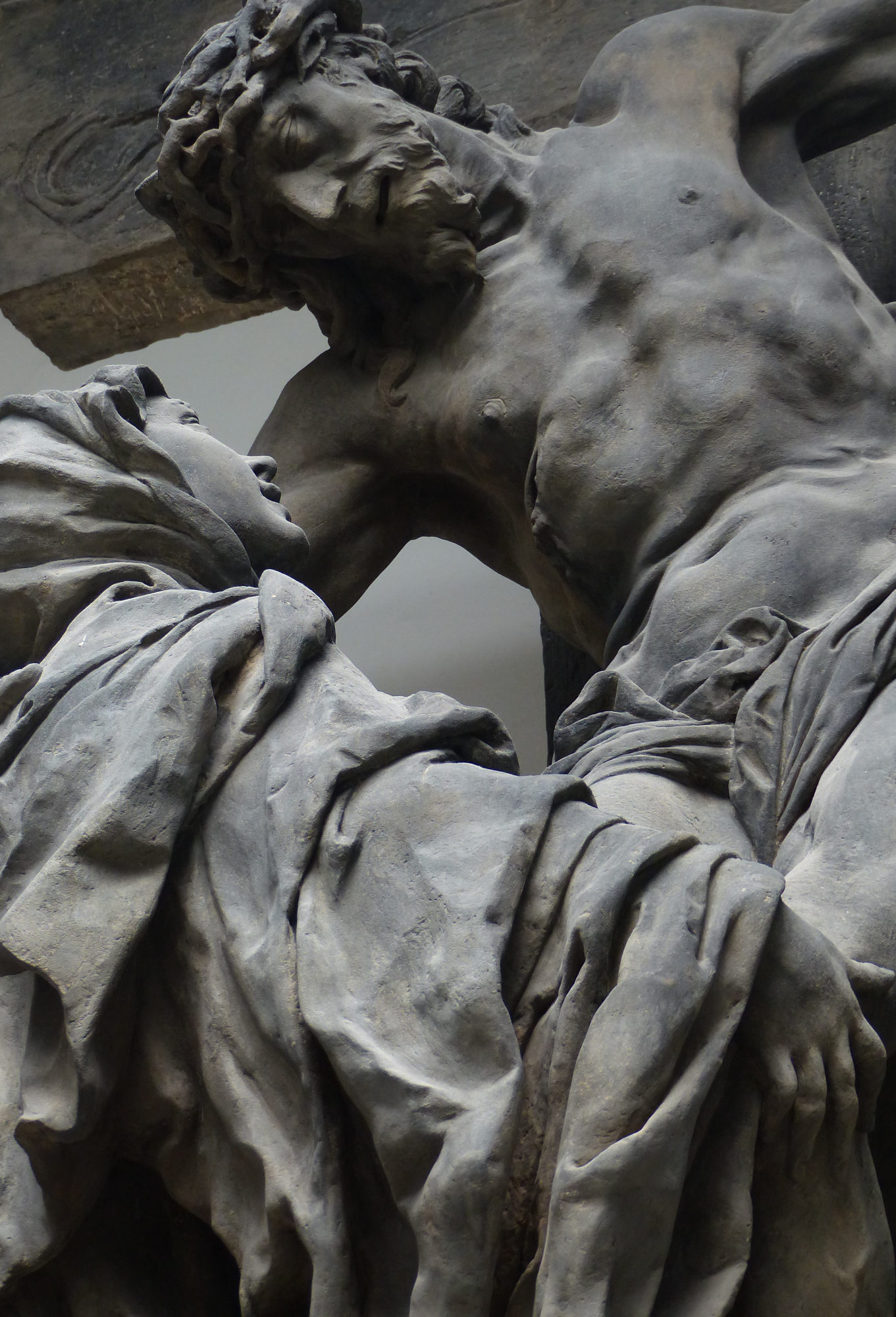Charles Bridge: Saint Lutgardis
Visitors to Prague are always surprised to learn that the avenue of saints keeping watch over Charles Bridge was never planned as a single architectural scheme. In fact the statues were created by no fewer than fifteen sculptors over a period of nearly 300 years — although the vast majority were erected between 1706 and 1730.
Principally a symbol of the power of the Catholic church in the wake of the Thirty Years’ War, the statues were also an indication of competing interests in the religious and social life of the region. Many were funded by the Jesuits, but other orders and institutions were equally keen to position themselves, literally, at this most historic of European river-crossings.
For example, this work of 1710 by the 26-year-old Matthias Bernhard Braun was the gift of the Abbot of Plasy, the major Cistercian abbey in the Czech lands. It was intended to commemorate the young Flemish novice Lutgardis, who at the age of 17 reportedly experienced the first of several intimate encounters with the crucified Christ.
In the original legend, Jesus not only offers his wounds for the saint to kiss, but, in response to her devotion, physically exchanges his bleeding heart for hers. With one eye on his wider public audience, Braun must have decided to present a more modest account of her story; at the same time, it is that very understatement which generates the statue’s enduring tenderness and emotional power. It has been likened — with some justification — to Bernini’s Ecstasy of Saint Teresa, one of several probable inspirations for its young and talented author.
Like many of the statues, this is a modern copy — in this case by Jiří Novák and Bořivoj Rak, from 1995. The original is preserved in the Lapidarium of the National Museum, and a detail of it can be seen below:









